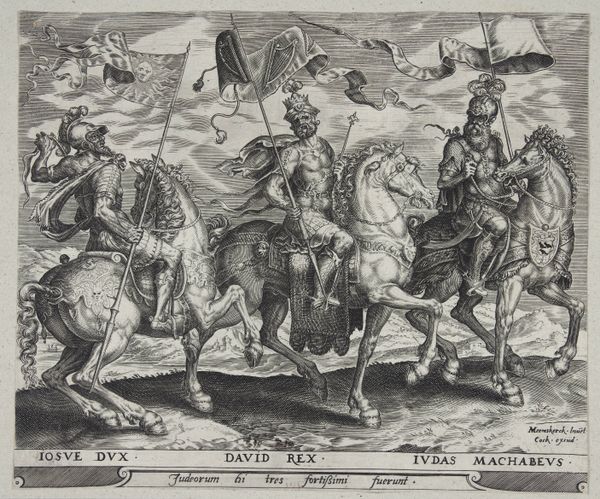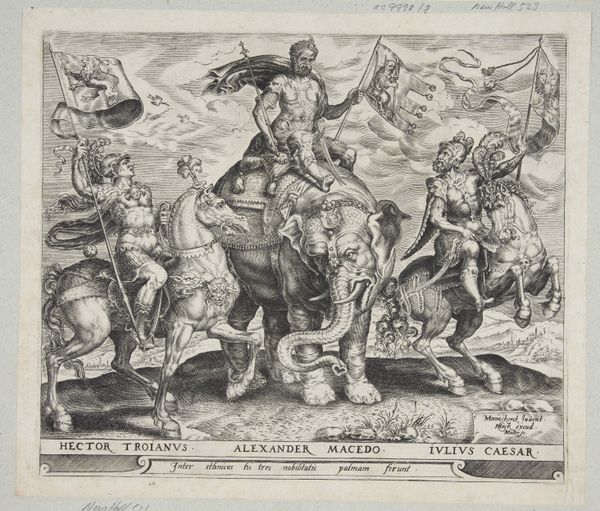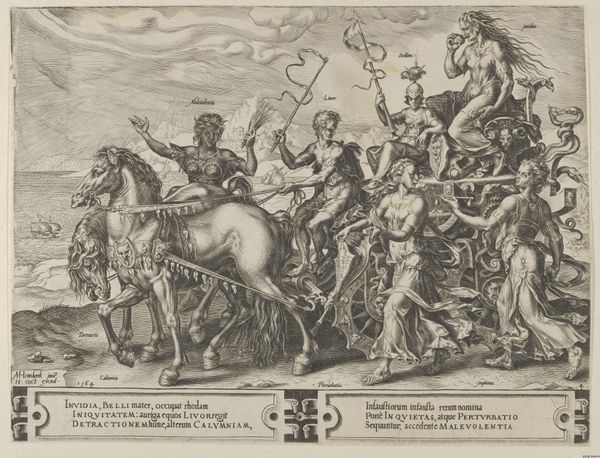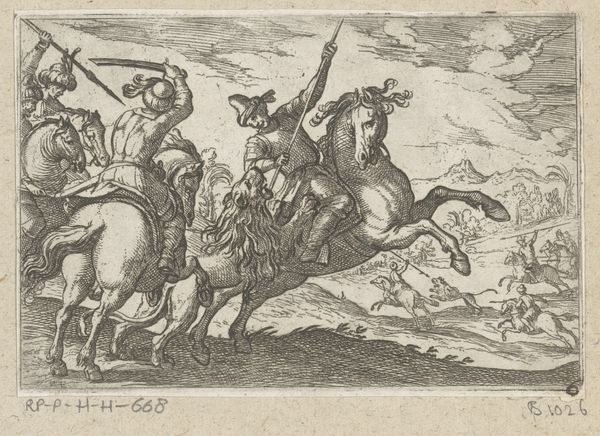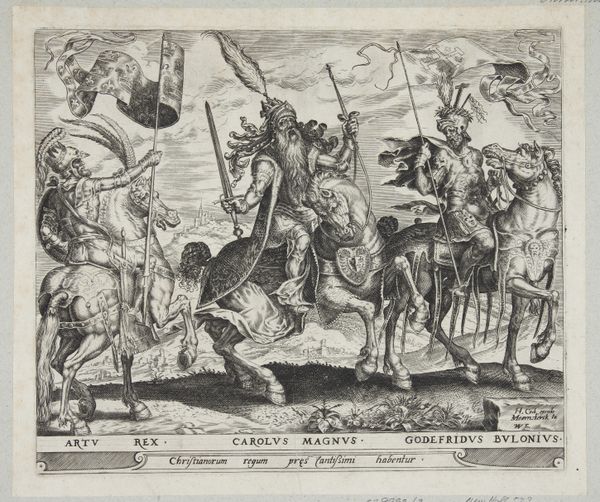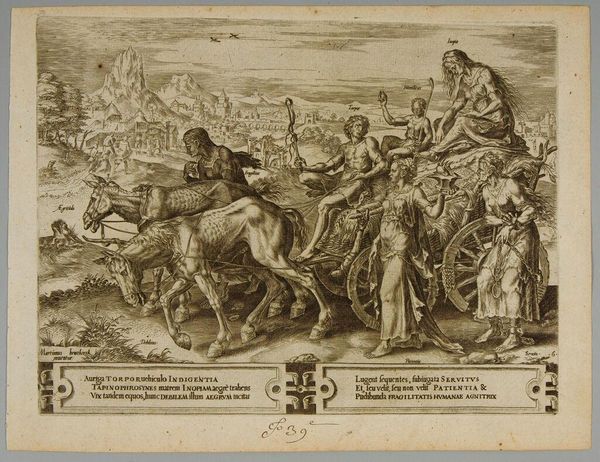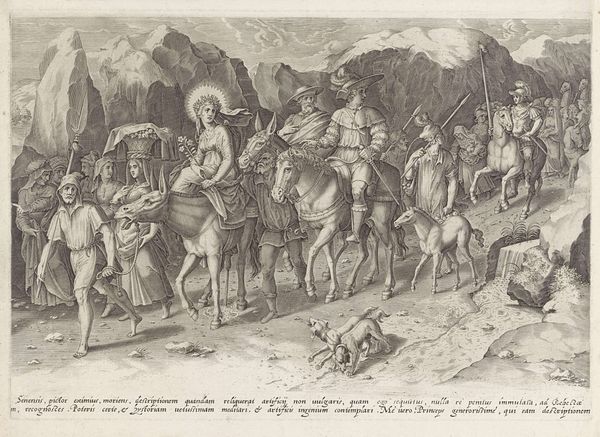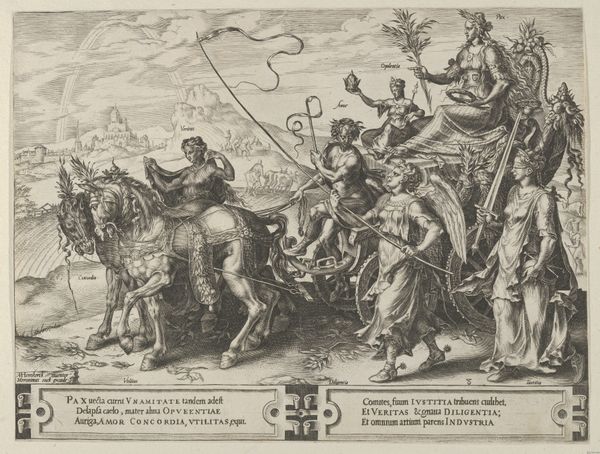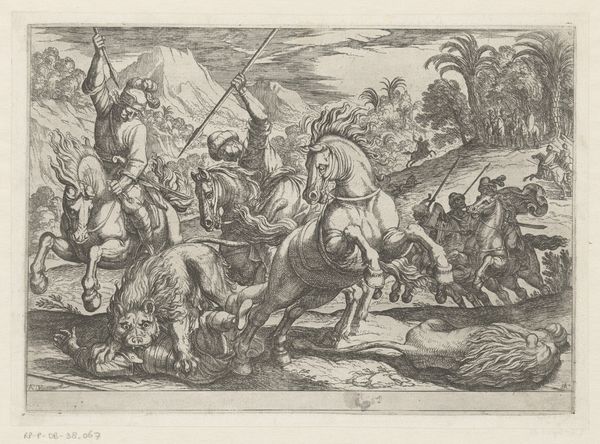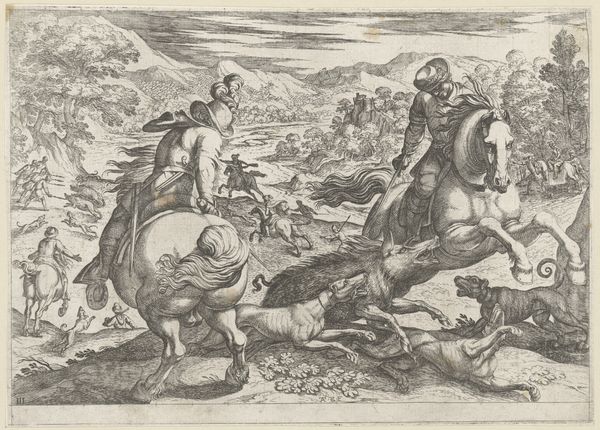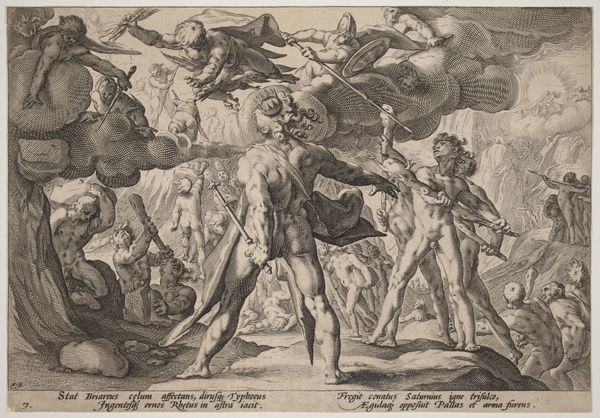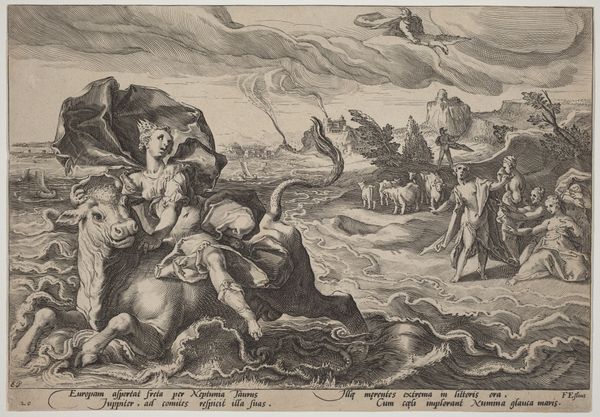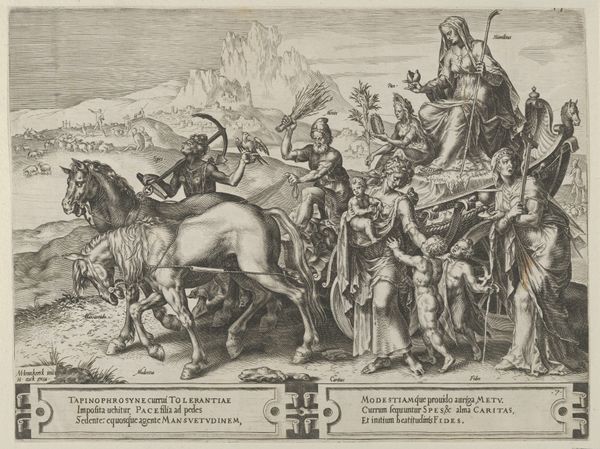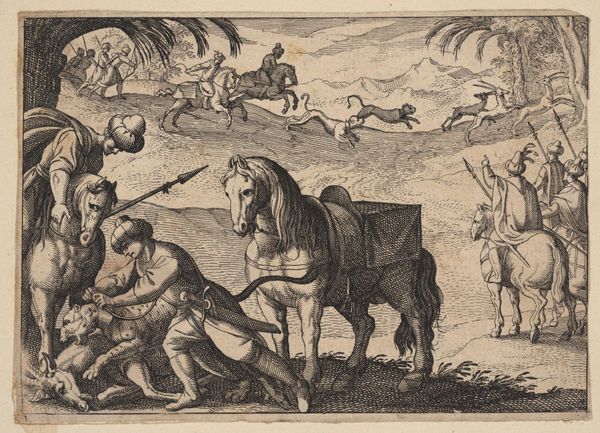
print, engraving
# print
#
landscape
#
mannerism
#
figuration
#
history-painting
#
engraving
Dimensions: 236 mm (height) x 274 mm (width) (monteringsmaal), 216 mm (height) x 256 mm (width) (bladmaal), 216 mm (height) x 256 mm (width) (plademaal)
Editor: Here we have Harmen Jansz. Muller's engraving, "Joshua, David and Judas Maccabeus," dating from 1565 to 1568. The detail is amazing. What do you see in this piece? Curator: I see a powerful statement about leadership and cultural memory. Notice how each figure carries symbolic weight. The banners above them—sun, skull, and heraldic shield—act as condensed narratives of their reigns and times. Each points to something crucial about cultural values. Editor: Can you elaborate? Curator: Certainly. Think about why Muller chose these particular figures: Joshua, David, and Judas Maccabeus. All are leaders from the Old Testament, figures of strength and devotion. It suggests continuity between past struggles and present-day anxieties about faith, doesn't it? How does the landscape behind them play into your interpretation? Editor: It appears stark and rather barren. Is that intended to be representative of the burden these men carry? Curator: Precisely. Or, perhaps a reflection of the difficult historical period in which Muller was working, full of religious and political strife. The landscape and even their clothing is reminiscent of similar Roman generals. Does this artistic interpretation suggest anything about eternal qualities? Editor: It is really interesting how they all stand for such a specific moment and time, yet can take on different meaning and broader impact depending on where you find yourself. Curator: Indeed! Images are not fixed; they evolve along with us. Recognizing this inherent symbolism and cultural relevance is crucial.
Comments
No comments
Be the first to comment and join the conversation on the ultimate creative platform.
